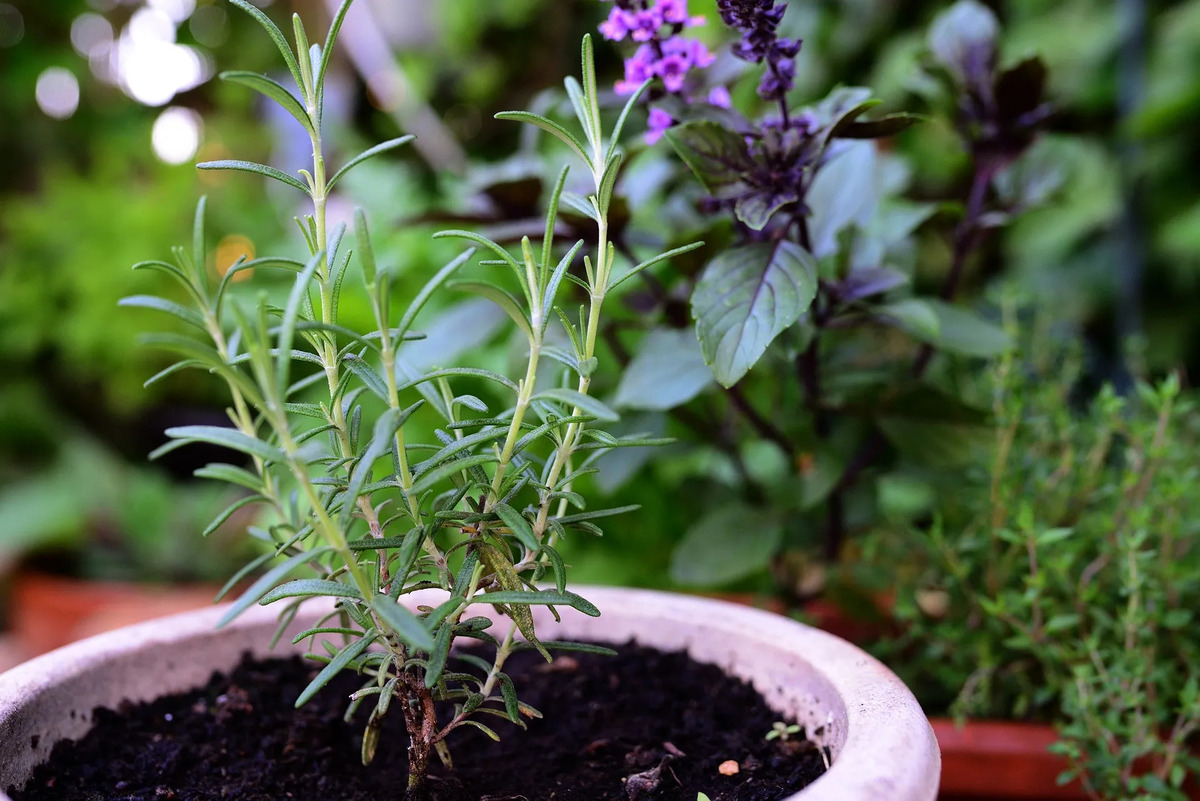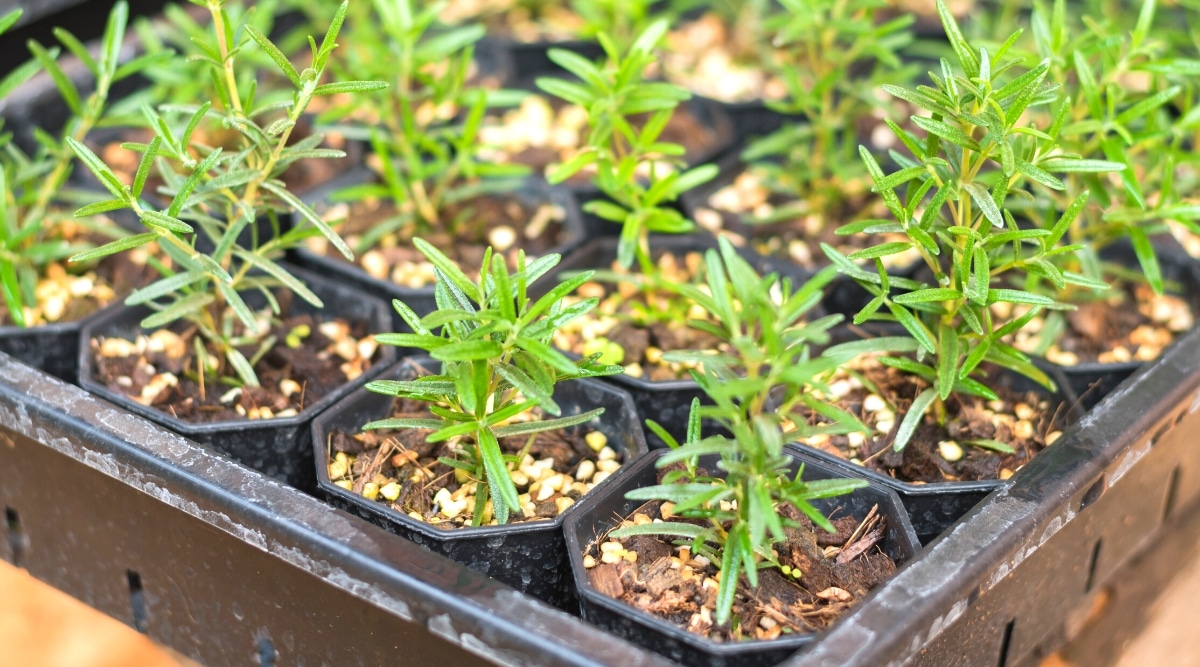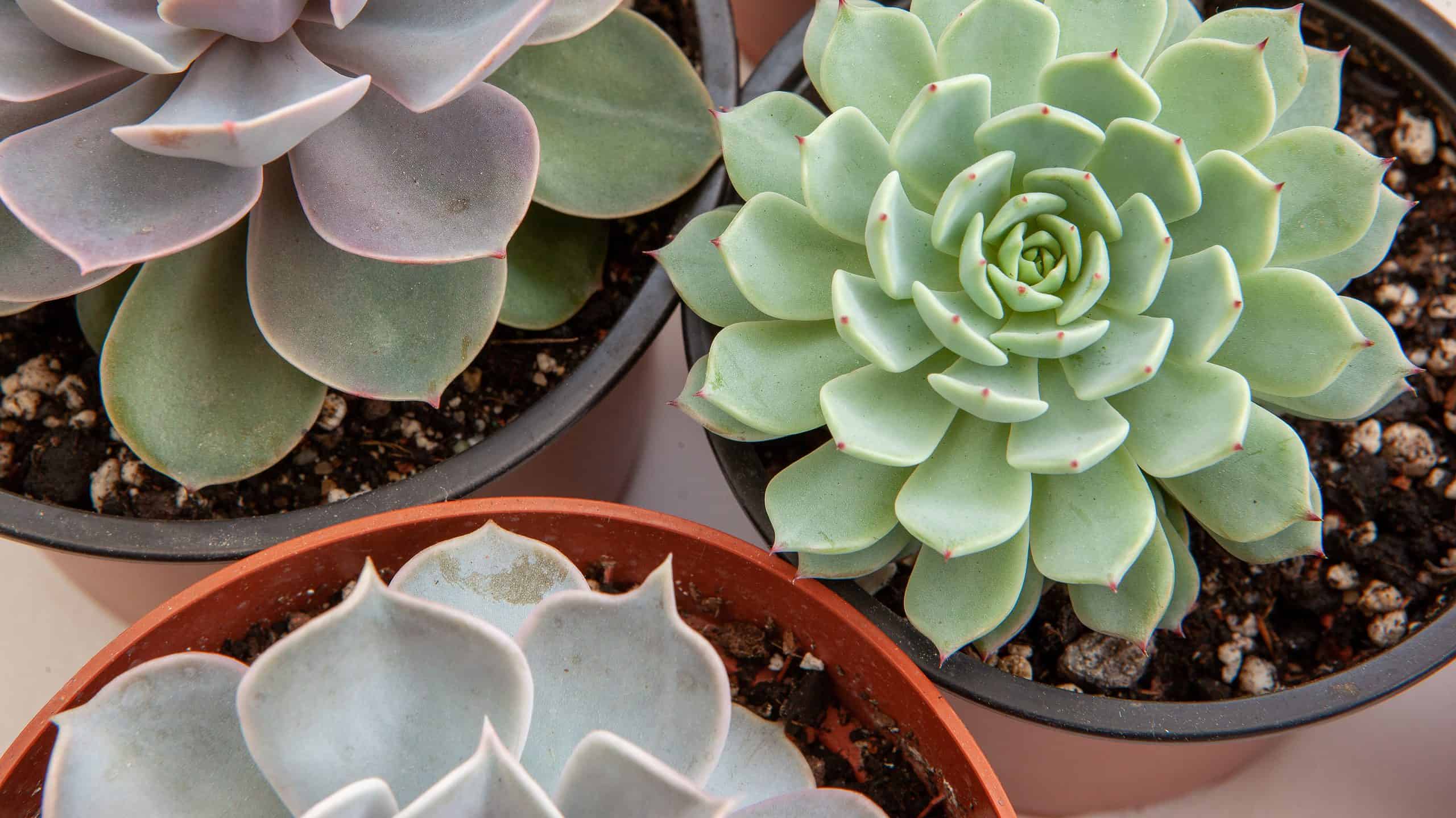Home>Types of Gardening>Edible Gardening>How Big Does Rosemary Grow


Edible Gardening
How Big Does Rosemary Grow
Modified: February 7, 2024
Learn how big rosemary can grow in your edible garden and discover tips on growing this popular herb for culinary use.
(Many of the links in this article redirect to a specific reviewed product. Your purchase of these products through affiliate links helps to generate commission for Chicagolandgardening.com, at no extra cost. Learn more)
Table of Contents
Introduction
Welcome to the world of edible gardening! If you’re passionate about growing and harvesting your own fresh herbs, then you’re in the right place. In this article, we’ll explore the fascinating world of growing rosemary, a versatile and aromatic herb that can add flavor and fragrance to a wide range of dishes.
Rosemary (Rosmarinus officinalis) is a popular culinary herb that is part of the mint family, and it has been used for centuries not only for its culinary value but also for its medicinal properties. With needle-like leaves and beautiful blue flowers, rosemary is not only a delight to the senses but also a resilient and low-maintenance herb that can be grown in various climates and conditions.
Whether you have a spacious garden, a small balcony, or even a sunny windowsill, you can enjoy the benefits of growing rosemary. This herb is known for its ability to thrive in both containers and in-ground gardens, making it a versatile option for any gardener.
In the following sections, we will dive into the basic facts about rosemary, the factors that affect its growth, the ideal growing conditions, the growth habit and size of rosemary plants, and how to manage their size through pruning techniques. We will also explore the different varieties of rosemary and their respective sizes. By the end of this article, you’ll have all the necessary information to grow and enjoy this delightful herb in your own edible garden.
Basic Facts about Rosemary
Rosemary, also known as Rosmarinus officinalis, is an evergreen herb native to the Mediterranean region. It has a rich history dating back thousands of years and was prized by ancient civilizations for its powerful aroma and medicinal properties. Here are some basic facts about rosemary:
- Rosemary belongs to the mint family, Lamiaceae, and is related to other culinary herbs such as basil, oregano, and thyme.
- The name “rosemary” is derived from the Latin words “ros” meaning dew and “marinus” meaning sea, which reflects the plant’s affinity for coastal regions.
- Rosemary plants have woody stems and needle-like leaves that are dark green on top and silvery underneath. These leaves are highly fragrant and are commonly used in cooking.
- In addition to its culinary uses, rosemary has been used for centuries in traditional medicine for its various health benefits. It is believed to have antioxidant, anti-inflammatory, and antimicrobial properties.
- Rosemary plants produce small, blue to purple flowers that bloom in the spring and summer. These flowers not only add beauty to the garden but also attract pollinators like bees and butterflies.
- There are numerous cultivars of rosemary, each having its own unique characteristics in terms of flavor, growth habit, and size.
- Rosemary can be grown in a variety of climate zones, but it thrives best in areas with mild winters and warm summers.
Now that you’re familiar with the basic facts about rosemary, let’s explore the factors that can influence its growth and how to create the ideal conditions for cultivating this herb in your garden.
Factors Affecting Rosemary Growth
Growing healthy and thriving rosemary plants requires understanding the factors that can influence their growth. By taking these factors into account, you can create optimal conditions for your rosemary to flourish. Here are the key factors that affect rosemary growth:
1. Sunlight:
Rosemary is a sun-loving herb that requires at least six to eight hours of direct sunlight per day. Insufficient sunlight can lead to weak and leggy growth. Ensure that you plant your rosemary in a location where it can receive ample sunlight, such as a south-facing garden bed or a spot on your patio that gets plenty of sun exposure.
2. Soil:
Rosemary thrives in well-draining soil that is slightly alkaline with a pH level between 6 and 8. Heavy or waterlogged soil can cause root rot and hinder the growth of the plant. To improve soil drainage, you can add organic matter like compost or perlite. Additionally, avoid overwatering as it can lead to root rot.
3. Watering:
While rosemary is a drought-tolerant herb, it still requires regular watering, especially during the first year of growth. Water your rosemary deeply but infrequently, allowing the top layer of the soil to dry out between waterings. Avoid overwatering, as this can cause root rot and other issues. It’s best to water in the morning to allow the plants to dry before evening.
4. Temperature:
Rosemary is well-adapted to Mediterranean climates and thrives in warm temperatures. It can tolerate a range of temperatures, but it is important to protect the plants from extreme cold and frost. If you live in a region with harsh winters, consider growing rosemary in containers so you can bring them indoors during the colder months.
5. Air Circulation:
Good air circulation is essential for preventing diseases and promoting healthy growth. Avoid overcrowding your rosemary plants and allow space between them to ensure proper airflow. This will help prevent the growth of fungal diseases and increase overall plant vigor.
By considering these factors and providing suitable growing conditions, you can ensure that your rosemary plants thrive and produce an abundance of flavorful leaves. In the next section, we will delve into the ideal growing conditions for rosemary in more detail.
Ideal Growing Conditions for Rosemary
Creating the ideal growing conditions is key to the success of your rosemary plants. By providing the right environment, you can promote healthy growth and maximize the flavor and fragrance of this wonderful herb. Here are the ideal growing conditions for rosemary:
1. Sunlight:
Rosemary thrives in full sunlight. It requires at least six to eight hours of direct sunlight daily to grow vigorously. Choose a sunny spot in your garden or on your balcony where your rosemary plants will receive ample sunlight throughout the day.
2. Soil:
Rosemary prefers well-draining soil that is slightly alkaline with a pH level between 6 and 8. Sandy or loamy soil is ideal for rosemary. If you have heavy clay soil, amend it with organic matter like compost to improve drainage and create a more favorable growing environment.
3. Watering:
Rosemary is a drought-tolerant herb, so it’s important not to overwater it. Water your plants deeply but infrequently, allowing the top layer of soil to dry out between waterings. This will encourage the development of a strong root system. Avoid wetting the foliage as it can increase the risk of disease.
4. Temperature:
Rosemary thrives in warm temperatures. It can tolerate a wide range of temperatures, ranging from 60°F (15°C) to 90°F (32°C). However, it’s important to protect the plants from frost and temperatures below 30°F (-1°C). If you live in a region with cold winters, consider growing rosemary in containers so you can bring them indoors during the colder months.
5. Pruning:
Regular pruning is beneficial for rosemary plants as it helps promote bushier growth and prevent them from becoming leggy. Pruning should be done in the spring, after the last frost, or in the early fall to maintain the desired shape and size of the plant.
6. Companion Planting:
Consider companion planting rosemary with other compatible plants, such as sage, thyme, and lavender. These plants not only create a visually appealing garden but also help deter pests and attract beneficial insects.
By providing the ideal growing conditions, you can ensure that your rosemary plants thrive and produce abundant foliage. In the next section, we will explore the growth habit and size of rosemary plants to help you plan and manage their space effectively in your garden.
Growth Habit and Size of Rosemary
Rosemary is an evergreen herb that exhibits a bushy and upright growth habit. Understanding the growth habit and size of rosemary is essential for planning and managing its space in your garden. Here’s what you need to know:
Rosemary plants typically grow up to 3 to 4 feet (0.9 to 1.2 meters) tall and spread about 2 to 4 feet (0.6 to 1.2 meters) wide. However, it’s important to note that the size can vary depending on the specific variety, growing conditions, and pruning practices.
When left unpruned, rosemary plants tend to develop a sprawling and slightly unruly shape. The branches can become woody and the plants may become leggy over time. To maintain a compact and neat appearance, regular pruning is recommended.
Pruning not only helps control the size of rosemary plants but also encourages bushier growth. It’s best to prune after flowering, typically in the spring or early fall. Trim back any long and straggly branches, and shape the plant as desired.
If you prefer a smaller-sized rosemary plant, there are dwarf varieties available. These cultivars have a more compact growth habit, reaching a height of around 1 to 2 feet (0.3 to 0.6 meters) and a spread of 1 to 3 feet (0.3 to 0.9 meters).
It’s important to give rosemary plants enough space to grow and spread. Crowding them can lead to poor air circulation and increased vulnerability to diseases. Placing them about 2 to 3 feet (0.6 to 0.9 meters) apart is a general guideline, but you can adjust the spacing based on the desired size and your gardening conditions.
In addition to their growth habit, rosemary plants have an incredible ability to attract pollinators. The fragrant blue flowers of rosemary are a favorite of bees and butterflies, making them a valuable addition to any pollinator-friendly garden.
Now that you’re familiar with the growth habit and size of rosemary, let’s explore the techniques for managing its size and maintaining its overall health through proper pruning methods in the next section.
Managing the Size of Rosemary
Managing the size of your rosemary plants is essential for maintaining their shape, promoting healthy growth, and ensuring they fit within the designated space in your garden. Here are some techniques for managing the size of rosemary:
1. Regular Pruning:
Pruning is the most effective way to control the size of your rosemary plants. Regularly trim back any long and straggly branches to maintain a compact and tidy appearance. Pruning should be done in the spring, after the last frost, or in the early fall to ensure that new growth has enough time to mature before the onset of winter.
2. Shape and Thinning:
When pruning your rosemary, consider the desired shape you want to achieve. You can trim the branches to create a rounded, mounded, or more formal shape, depending on your preference. Additionally, thinning out crowded branches will promote better airflow and reduce the risk of disease.
3. Pinching Back:
Pinching back the tips of your rosemary plants can help promote bushier growth and prevent them from becoming leggy. Pinch off the top few inches of the stems using your fingers or sharp pruning shears. This encourages the plant to branch out rather than grow long and thin.
4. Avoid Overwatering:
Overwatering can lead to excessive growth and a larger plant size. Rosemary prefers moderately dry conditions and can tolerate short periods of drought. Water deeply but infrequently, allowing the top layer of soil to dry out between waterings. This will help control the plant’s overall size.
5. Container Gardening:
If you have limited space or want to have more control over the size of your rosemary plants, consider growing them in containers. This allows you to easily move the plants and control their growth by selecting an appropriately sized container. It also prevents the plants from spreading and taking over your garden.
By implementing these techniques, you can effectively manage the size of your rosemary plants and ensure they fit within the desired space while maintaining their health and vitality. In the next section, we will explore various pruning techniques specifically tailored for rosemary plants.
Pruning Techniques for Rosemary
Pruning is an important aspect of rosemary care that helps maintain the health, shape, and size of the plant. By using proper pruning techniques, you can promote bushier growth, control the size of your rosemary plants, and enhance their overall appearance. Here are some pruning techniques specifically tailored for rosemary:
1. Spring Pruning:
In the spring, after the last frost, it’s important to give your rosemary plants a thorough pruning. This helps stimulate new growth and encourages the plant to develop a compact shape. Start by trimming back any straggly or damaged branches to the desired height, taking care not to remove more than one-third of the plant’s overall growth.
2. Thin Out Overcrowded Branches:
Over time, rosemary plants can become dense and overcrowded, which hampers airflow and increases the risk of disease. To address this issue, selectively prune out some of the older or weaker branches to thin out the plant. This promotes better air circulation and reduces the risk of pests and diseases.
3. Shape the Plant:
Rosemary can be shaped and trained into various forms, such as a rounded bush or a formal hedge. Trim the outer branches to achieve the desired shape, ensuring that the foliage remains evenly distributed. Take care not to remove too much of the plant at once, as this can stress the rosemary and affect its growth.
4. Pinch the Tips:
Pinching back the tips of your rosemary plants is an effective technique for promoting bushier growth and preventing legginess. Using your fingers or sharp pruning shears, pinch off the top few inches of each stem. This encourages lateral branching and results in a fuller and denser plant.
5. Harvest Pruning:
Regularly harvesting your rosemary not only allows you to enjoy its fresh culinary flavor but also promotes healthy growth. When harvesting, trim the stems by cutting just above a leaf node or a branching point. This not only encourages new growth but also helps maintain the overall shape and size of the plant.
Remember to always use clean and sharp pruning tools to ensure clean cuts and minimize the risk of disease transmission. Additionally, avoid pruning during periods of extreme heat or drought stress, as this can further stress the plant.
By implementing these pruning techniques, you can effectively shape and control the size of your rosemary plants while promoting healthy growth and maintaining their overall appearance. In the next section, we will explore some common rosemary varieties and discuss their respective sizes.
Common Varieties of Rosemary and Their Sizes
Rosemary comes in a variety of cultivars, each with its own unique characteristics, including flavor, growth habit, and size. By selecting the right variety, you can ensure that it fits perfectly in your garden space. Here are some common varieties of rosemary and their respective sizes:
1. ‘Arp’ Rosemary (Rosmarinus officinalis ‘Arp’):
The ‘Arp’ rosemary is a hardy variety that can tolerate cold temperatures better than other cultivars. It typically grows to a height of 3 to 4 feet (0.9 to 1.2 meters) and spreads to about 2 to 3 feet (0.6 to 0.9 meters). This variety has a strong fragrance and is favored for its culinary uses.
2. ‘Tuscan Blue’ Rosemary (Rosmarinus officinalis ‘Tuscan Blue’):
The ‘Tuscan Blue’ rosemary is known for its intense blue flowers and strong aromatic fragrance. It grows slightly larger than ‘Arp’, reaching a height of 4 to 6 feet (1.2 to 1.8 meters) with a spread of 3 to 4 feet (0.9 to 1.2 meters). This variety forms an upright and slightly sprawling bush.
3. ‘Prostratus’ Rosemary (Rosmarinus officinalis ‘Prostratus’):
‘Prostratus’ rosemary is a trailing variety that is perfect for cascading over walls or hanging baskets. It has a trailing growth habit and reaches a height of about 1 to 2 feet (0.3 to 0.6 meters). The branches of this variety can spread out up to 5 feet (1.5 meters) wide. It’s a great choice for adding a decorative touch to your garden.
4. ‘Blue Spires’ Rosemary (Rosmarinus officinalis ‘Blue Spires’):
‘Blue Spires’ rosemary is a compact and upright cultivar that grows to a height of about 2 to 3 feet (0.6 to 0.9 meters) and spreads to around 2 feet (0.6 meters) wide. It has deep blue flowers and a strong aromatic fragrance. This variety is well-suited for smaller gardens or containers.
5. ‘Golden Rain’ Rosemary (Rosmarinus officinalis ‘Golden Rain’):
‘Golden Rain’ rosemary, as the name suggests, is known for its golden foliage. It has a compact and upright growth habit, reaching a height of 2 to 3 feet (0.6 to 0.9 meters) and spreading to about 1.5 to 2 feet (0.5 to 0.6 meters) wide. This variety adds a unique and vibrant color to your garden.
These are just a few examples of the common rosemary varieties and their respective sizes. When selecting a rosemary plant for your garden, consider the available space, growth habit, and the flavor of the specific cultivar. Keep in mind that proper pruning and maintenance can also help to control and shape the size of your rosemary plants.
Now that we have explored the various aspects of rosemary cultivation, from its basic facts and ideal growing conditions to managing its size and using proper pruning techniques, you are equipped with the knowledge to successfully grow and enjoy this delightful herb in your garden.
Conclusion
Growing rosemary in your own edible garden can be a rewarding journey filled with delightful scents, flavors, and an abundance of culinary possibilities. By understanding the basic facts about rosemary, providing the ideal growing conditions, managing its size through pruning techniques, and exploring the different varieties, you can cultivate healthy and thriving rosemary plants.
Rosemary, with its aromatic leaves and vibrant blue flowers, adds not only beauty but also a wealth of flavor to your dishes. It is a versatile herb that can thrive in various climates and adapt to different growing conditions. From sun-soaked gardens to compact balconies, rosemary can find a place in any location.
Remember to provide your rosemary plants with ample sunlight, well-draining soil, and proper watering techniques to maintain their health and vigor. Regular pruning allows you to shape and manage their size, ensuring they fit within the designated space and maintain a neat appearance.
Choosing the right variety of rosemary can also enhance your gardening experience. From the cold-tolerant ‘Arp’ to the trailing ‘Prostratus’ or the compact ‘Blue Spires’, there is a rosemary cultivar suitable for every gardener’s needs.
Whether you use rosemary for culinary purposes, for its medicinal benefits, or to attract pollinators to your garden, this versatile herb will surely bring joy to your edible gardening endeavors.
So embark on your rosemary-growing adventure, experiment with its flavors in your favorite recipes, and enjoy the beauty and benefits this herb brings to your garden and kitchen. Happy gardening!









